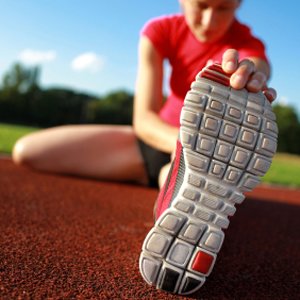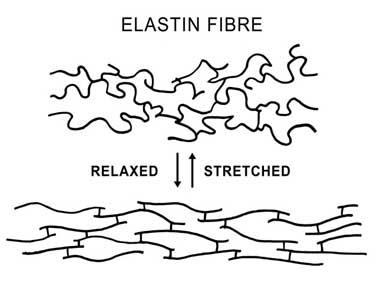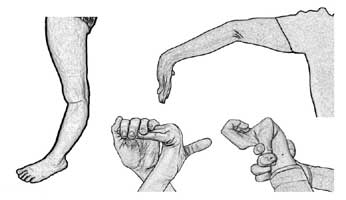Introduction

Benefits of stretching
Stretching is a powerful tool that has many benefits. When done safely, stretching can be useful for either a sedentary or active lifestyle, by improving and maintaining joint mobility, muscle flexibility and muscle tone. It can help make simple movements such as putting your shoes on easier, give you a better posture, increase your fitness, reduce muscle tension and ease muscle pain after exercise. It can also help compensate for inactivity or a sedentary lifestyle, as well as prevent injury occurring during work, sport and other types of exercise.
Stretching is useful as a warm up or for cooling down after vigorous exercise, for lengthening short muscles after activity. It is also useful for exercise involving muscle contraction or as a result of inactivity and for enabling muscles to exert force over a wider range of movement. Stretching is an important component to staying healthy and supple. It improves muscle stamina and endurance and can lead to a better quality of life. It can be done anywhere, anytime and best of all it is free!
The benefits of stretching can be divided into physical benefits, physiological benefits and psychological benefits …..
Problems with stretching
Although there are great benefits from doing stretches, there are also dangers. Over-stretching or poorly localised stretching can cause too much joint mobility or hypermobility and problems such as sprains, strains and joint instability. This book provides stretches that are safe and teaches you how to avoid these sorts of problems. Stretching also has limitations and does not provide all the physical needs required by the body. For example, it does not provide aerobic fitness, coordination or skill development and has limited capacity at building muscle strength. It should therefore not be considered as a total fitness program but as complementary to other exercise systems.
Individual differences
Everyone is different. A ‘one size fits all’ approach to stretching is dangerous. Individual differences in muscle flexibility and joint mobility are due to a combination of genetic factors, lifestyle factors and natural ageing processes. In addition, postural forces, major injuries, repeated minor traumas, our mental and emotional state and how we use our body, cause our body to change over time, resulting in significant individual differences between people.
Safe Stretch is a stretching book which acknowledges these differences, taking them into account when recommending stretching exercises. It considers firstly if muscles need stretching, and if they do, which need strong stretching and which need light stretching. It also considers that some muscle groups may in fact need strengthening to maintain joint stability, and strengthening is a component of active and post-isometric stretching techniques.
Two main factors – genetics and lifestyle influence our body and shape us in a variety of ways and they must be considered when designing the type of stretching program that best suits our needs. Ageing also affects our tissues and range of movement and must also be taken into account when designing a safe stretching program.
Genetic factors
Our genes are the blueprints of our body and they determine the shape and structural composition of our body and its function. They determine the thickness of our bones, elasticity of our ligaments, size and strength of our muscles and many other things. These in turn influence our functions, including muscle flexibility and joint mobility and stability. ……
Lifestyle
Our behaviour changes us both structurally and functionally. The types of physical activity, including lack of physical activity and other lifestyle factors modify the structure of our tissues, and this in turn influences the stability, mobility, flexibility and other functions of our body.
The frequency and the intensity we use our muscles affects their strength. The frequency we stretch as well as how far we stretch our muscles affects their length and flexibility. Under-activity and poor posture are characteristics of a sedentary lifestyle, which can include hours of sitting at a desk, driving a car and watching television. If these activities, or lifestyle choices are continued over months or years, this will result in muscle atrophy, weakness and shortness, reduced elasticity in ligaments and greater viscosity of synovial fluid, all of which can lead to loss of cartilage and increased joint stiffness.
Ageing
Ageing is the process of molecular and cellular changes that occur to an individual over the course of their lifetime with various effects on their structure and function. The accumulation of molecular errors that compromise cell functions occurs because of genetic, lifestyle, environmental and other factors.
Ageing is the accumulation of damage in molecules, …..
Posture
Posture is concerned with the carriage of the body as a whole, the head, spine and the position of the arms and legs. Good posture depends on optimal muscle tone, power and flexibility and on having appropriate balance between the agonists and antagonist muscles at the front and back of the body, and between the muscles on the left and right sides. Good posture also depends on appropriate ligament support around the joints.
Prolonged sitting or standing, particularly in the presence of a slouched forward posture, eventually results in changes to muscle tone, power and elasticity. The posteriorly positioned muscles have to work harder against the continuous action of gravity pulling the body forwards and downwards. ….
Flexibility, mobility and stability
Flexibility and mobility are not the same. Mobility is the same as movement, and is the primary function of joints which should move freely and through a full range of movement. Flexibility is the same as extensibility, an important attribute of skeletal muscles, and is the ability of a muscle or group of muscles to lengthen through a range of motion.
Mobility is influenced by a range of factors including: ….
Types of stretches
Not all stretches are the same. They differ in the way they are executed, their effects on the body and their levels of safety. There are two main kinds of stretches – dynamic stretches and static stretches. Dynamic stretching uses controlled muscle contraction to generate continuous swinging or to-and-fro movements to take a joint through its stiffness barrier. Dynamic stretching is …..





